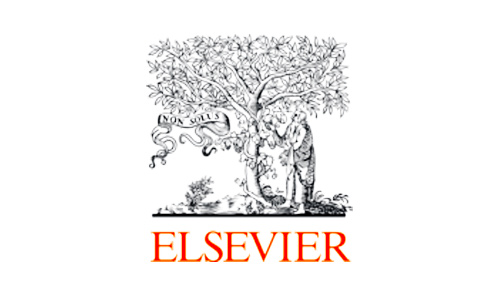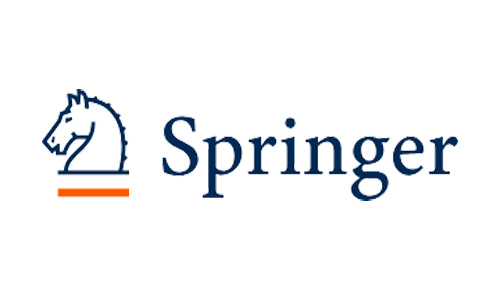- Follow Us
Publications
High-profile publications featuring CDI Labs products and services
275 Total Publications
Refine Your Search
Publication Details
- Date
- Link
- + Abstract

Proteomics
- Main Product: HuProt
- HuProt: Global Profiling of PknG Interactions Using a Human Proteome Microarray Reveals Novel Connections with CypA
- Fan-Lin Wu, Sheng-Ce Tao, et. al.
- Key Laboratory of Systems Biomedicine (Ministry of Education), Shanghai Center for Systems Biomedicine
HuProt PPI: Mycobacterium tuberculosis (Mtb) serine/threonine kinase PknG plays an important role in the Mtb–host interaction by facilitating the survival of Mtb in macrophages. However, the human proteins with which the PknG interacts, and the underlying molecular mechanisms are still largely unknown. In this study, a HuProt array is been applied to globally identify the host proteins to which PknG binds. In this way, 125 interactors are discovered, including a cyclophilin protein, CypA.

JCI
- Main Product: HuProt
- HuProt: HIC1 deletion promotes breast cancer progression by activating tumor cell/fibroblast crosstalk
- Yingying Wang, Jianhua Wang, et. al.
- Dept of Biochemistry and Molecular Cell Biology, Shanghai Jiao Tong University
HuProt PPI: Breast cancer (BrCa) is the malignant tumor that most seriously threatens female health; however, the molecular mechanism underlying its progression remains unclear. Here, we found that conditional deletion of hypermethylated in cancer 1 (HIC1) in the mouse mammary gland might contribute to premalignant transformation in the early stage of tumor formation. Moreover, the chemokine (C-X-C motif) ligand 14 (CXCL14) secreted by HIC1-deleted BrCa cells bound to its cognate receptor GPR85 on mammary fibroblasts in the microenvironment and was responsible for activating these fibroblasts via the ERK1/2, Akt, and neddylation pathways, whereas the activated fibroblasts promoted BrCa progression via the induction of epithelial-mesenchymal transition (EMT) by the C-C chemokine ligand 17 (CCL17)/CC chemokine receptor 4 (CCR4) axis.

Biochemical and Biophysical Research Communications - Elsevier
- Main Product: HuProt
- HuProt: Circ-UBR5: An exonic circular RNA and novel small nuclear RNA involved in RNA splicing
- Meilin Qin, Gang Wei, Xiaomeng Sun
- Shanghai Jiao Tong University School of Medicine
HuProt DNA RNA: Circular RNAs (circRNAs) are class of non-coding RNAs formed by back-splicing events as loops, and could be found in all types of organisms. They play important and diverse roles in cell development, growth, and tumorigenesis, but functions of the majority of circRNAs remain enigmatic. Particularly functional phenotypes of great majority of circRNAs are not obvious. Here we randomly selected a circRNA circ-UBR5, which has no obvious functional phenotype in non-small cell lung cancer (NSCLC) cells from our previous research findings, to explore its potential function in cells.

ACS Publications
- Main Product: HuProt
- HuProt: High-Throughput Chip Assay for Investigating Escherichia coli Interaction with the Blood–Brain Barrier Using Microbial and Human Proteome Microarrays (Dual-Microarray Technology)
- Yingzhu Feng, Heng Zhu, et. al.
- Key Laboratory of Bio-theological Science and Technology of Ministry of Education, College of Bioengineering
HuProt Review: Bacterial meningitis in neonates and infants is an acute lethal disease and occurs in response to microbial exploitation of the blood–brain barrier (BBB), resulting in the intracranial inflammation. Several pathogens, such as Escherichia coli (E. coli), can cause this devastating disease; however, the underlying molecular mechanisms by which these pathogens exploit the BBB remain incompletely understood. To identify important players on both the pathogen and host sides that govern the E. coli–BBB cell interactions, we took advantage of the E. coli and human proteome microarrays (i.e., HuProt) as an unbiased, proteome-wide tool for identification of important players on both sides.

British Journal of Cancer
- Main Product: HuProt
- HuProt: Angiopoietin-like protein 3 blocks nuclear import of FAK and contributes to sorafenib response
- Yi Bao, Fu Yang, Bing Liu, Tangliang Zhao, Zhipeng Xu, Ying Xiong, Shuhan Sun, Le Qu & Linhui Wang
- Dept of Urology, Changzheng Hospital, Second Military Medical University
HuProt PPI: Poor drug response of sorafenib is a major challenge which reduces clinical benefit of renal cell carcinoma (RCC) patients. It is therefore of great clinical significance to elucidate the underlying mechanism to restore the therapeutic response to sorafenib.

ACS Chemical Biology
- Main Product: HuProt
- HuProt: Screening a Protein Array with Synthetic Biotinylated Inorganic Polyphosphate To Define the Human PolyP-ome
- Cristina Azevedo, Adolfo Saiardi, et. al.
- Medical Research Council Laboratory for Molecular Cell Biology, University College London
HuProt Small Molecule: Phenotypes are established by tight regulation on protein functions. This regulation can be mediated allosterically, through protein binding, and covalently, through post-translational modification (PTM). The integration of an ever-increasing number of PTMs into regulatory networks enables and defines the proteome complexity. Protein PTMs can occur enzymatically and nonenzymatically. Polyphosphorylation, which is a recently discovered PTM that belongs to the latter category, is the covalent attachment of the linear ortho-phosphate polymer called inorganic polyphosphate (polyP) to lysine residues. PolyP, which is ubiquitously present in nature, is also known to allosterically control protein function.

Molecular Cell
- Main Product: HuProt
- HuProt: PELI1 Selectively Targets Kinase-Active RIP3 for Ubiquitylation-Dependent Proteasomal Degradation
- Seung-Won Choi, You-Sun-Kim, et. al.
- Department of Biochemistry, Ajou University School of Medicine, Suwon
HuProt PPI: Receptor-interacting protein kinase-3 (RIP3 or RIPK3) is a central protein in necroptosis, but posttranslational processes that regulate RIP3 activity and stability remain poorly understood. Here, we identify pellino E3 ubiquitin protein ligase 1 (PELI1) as an E3 ligase that targets RIP3 for proteasome-dependent degradation. Phosphorylation of RIP3 on T182 leads to interaction with the forkhead-associated (FHA) domain of PELI1 and PELI1-mediated K48-linked polyubiquitylation of RIP3 on K363. This same phosphorylation event is also important for RIP3 kinase activity; thus, PELI1 preferentially targets kinase-active RIP3 for degradation. PELI1-mediated RIP3 degradation effectively prevents cell death triggered by RIP3 hyperactivation. Importantly, upregulated RIP3 expression in keratinocytes from toxic epidermal necrolysis (TEN) patients is correlated with low expression of PELI1, suggesting that loss of PELI1 may play a role in the pathogenesis of TEN.

Methods in Molecular Biology - Springer
- Main Product: HuProt
- HuProt: Antibody Specificity Profiling Using Protein Microarrays
- Pedro Ramos-López, José Irizarry, Ignacio Pino & Seth Blackshaw
- CDI Labs
HuProt Antibody Specificity: Antibodies are the most widely used reagent for isolation and detection of specific proteins. However, using antibodies that are not highly specific in these studies can generate inaccurate and misleading data. Protein microarrays offer a platform by which antibody cross-reactivity against a broad range of cellular antigens can be simultaneously and quantitatively profiled. This protocol describes in detail the process of array pretreatment, antibody binding, washing, scanning and quantitative analysis of antibody specificity.

BMC - Journal of Translational Medicine
- Main Product: HuProt
- Baseline antibody profiles predict toxicity in melanoma patients treated with immune checkpoint inhibitors
- Michael F. Gowen, Iman Osman, et. al.
- The Ronald O. Perelman Dept of Dermatology, New York University Medicine
Immune checkpoint inhibitors (anti-CTLA-4, anti-PD-1, or the combination) enhance anti-tumor immune responses, yielding durable clinical benefit in several cancer types, including melanoma. However, a subset of patients experience immune-related adverse events (irAEs), which can be severe and result in treatment termination. To date, no biomarker exists that can predict development of irAEs.

Journal of Breast Cancer
- Main Product: HuProt
- HuProt: Identification of the Thioredoxin-Like 2 Autoantibody as a Specific Biomarker for Triple-Negative Breast Cancer
- Jee Min Chung, Ho Chul Kang, et. al.
- Genomic Instability Research Center, Ajou University School of Medicine
Triple-negative breast cancer (TNBC) has a higher risk of death within 5 years of being diagnosed than the other forms of breast cancer. It is the second leading cause of death due to cancer among women. Currently, however, no diagnostic blood-based biomarker exists to identify the early stages of TNBC. To address this point, we utilized a human protein microarray system to identify serum autoantibodies that showed different expression patterns between TNBC and normal serum samples, and identified five autoantibodies showing TNBC-specific expression.